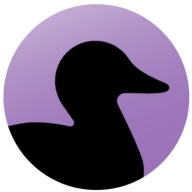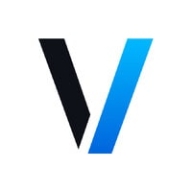

Veracode and Coverity Static both compete in the static code analysis solutions category. Veracode seems to have the upper hand with its extensive API integrations, ease of use, and cloud-based deployment model that offers flexibility and broad programming language support.
Features: Veracode provides integration with IDEs and build tools, real-time scan results, and remediation consulting. It helps developers identify vulnerabilities early in the development process. Coverity Static offers detailed code analysis with a low false positive rate, effective C/C++ support, and excellent compliance reporting systems.
Room for Improvement: Veracode could enhance its usability by addressing false positives, reducing scan times, and simplifying user interfaces. Improving language support and dashboard intuitiveness would be beneficial. Coverity Static might improve by offering better pricing structures, greater usability for non-technical users, and more robust third-party integration support.
Ease of Deployment and Customer Service: Veracode, being cloud-hosted, ensures excellent accessibility and quick technical support, despite needing faster response times. Coverity Static, typically on-premises, provides stable integration capabilities and reliable support, but may lack the agility of Veracode.
Pricing and ROI: Veracode's extensive features and support options come at a high cost, offering significant ROI through reduced security breaches and time savings, yet it presents challenges for smaller companies. Coverity Static's user-based licensing model is expensive, especially for larger teams, but remains competitive due to its analysis capabilities, justifying its cost by improving development efficiency and risk mitigation.
| Product | Market Share (%) |
|---|---|
| Veracode | 6.9% |
| Coverity Static | 6.0% |
| Other | 87.1% |


| Company Size | Count |
|---|---|
| Small Business | 8 |
| Midsize Enterprise | 6 |
| Large Enterprise | 31 |
| Company Size | Count |
|---|---|
| Small Business | 69 |
| Midsize Enterprise | 43 |
| Large Enterprise | 112 |
Coverity gives you the speed, ease of use, accuracy, industry standards compliance, and scalability that you need to develop high-quality, secure applications. Coverity identifies critical software quality defects and security vulnerabilities in code as it’s written, early in the development process, when it’s least costly and easiest to fix. With the Code Sight integrated development environment (IDE) plugin, developers get accurate analysis in seconds in their IDE as they code. Precise actionable remediation advice and context-specific eLearning help your developers understand how to fix their prioritized issues quickly, without having to become security experts.
Coverity seamlessly integrates automated security testing into your CI/CD pipelines and supports your existing development tools and workflows. Choose where and how to do your development: on-premises or in the cloud with the Polaris Software Integrity Platform (SaaS), a highly scalable, cloud-based application security platform. Coverity supports more than 20 languages and 200 frameworks and templates.
Veracode is a leading provider of application security solutions, offering tools to identify, mitigate, and prevent vulnerabilities across the software development lifecycle. Its cloud-based platform integrates security into DevOps workflows, helping organizations ensure that their code remains secure and compliant with industry standards.
Veracode supports multiple application security testing types, including static analysis (SAST), dynamic analysis (DAST), software composition analysis (SCA), and manual penetration testing. These tools are designed to help developers detect vulnerabilities early in development while maintaining speed in deployment. Veracode also emphasizes scalability, offering features for enterprises that manage a large number of applications across different teams. Its robust reporting and analytics capabilities allow organizations to continuously monitor their security posture and track progress toward remediation.
What are the key features of Veracode?
What benefits should users consider in Veracode reviews?
Veracode is widely adopted in industries like finance, healthcare, and government, where compliance and security are critical. It helps these organizations maintain strict security standards while enabling rapid development through its integration with Agile and DevOps methodologies.
Veracode helps businesses secure their applications efficiently, ensuring they can deliver safe and compliant software at scale.
We monitor all Static Application Security Testing (SAST) reviews to prevent fraudulent reviews and keep review quality high. We do not post reviews by company employees or direct competitors. We validate each review for authenticity via cross-reference with LinkedIn, and personal follow-up with the reviewer when necessary.